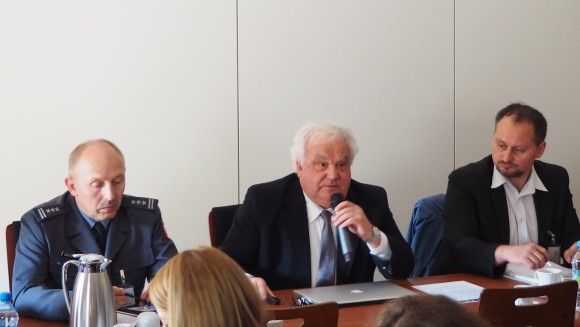American Tanks in Mid-Eastern Europe?
US Armed Forces are currently in a process of creating an analysis regarding potential deployment of a portion of the equipment for an armoured brigade within the Mid-Eastern Europe. Sending the equipment in question to Europe would constitute an element of the European Reassurance Initiative.
US Army Europe commander, General Ben Hodges, stated in his interview for the Stars and Stripes magazine that currently an analysis is being carried out, aim of which is to scrutinize potential deployment of equipment for the armoured units in Bulgaria, Poland, Romania or the Baltic states. The analysts are considering company- or battalion-sized units here. Bartosz Węglarczyk, working for the Rzeczpospolita daily, was the first Polish journalist to publish the info on the US Army analytical initiative.
General Hodges also confirmed the reports, according to which the Americans are planning to send equipment for a full brigade combat group to Europe, including M1 Abrams main battle tanks, M2 Bradley infantry fighting vehicles or M109 self-propelled howitzers. Aim of the ongoing works is to make it possible to define if, and which, if any, equipment from the US could be stored in the Mid-Eastern European states.
Deployment of the equipment is to also have an impact on expanding the quick reaction capabilities within Europe. In the basic assumption, this means that the equipment placed in the European storages will be remaining at disposal the US Army brigades which would be assigned to the US Army command for the given period. Last year 1st Brigade of the 1st Cavalry Division played that role, elements of which were periodically stationed in Poland, in connection with the Ukrainian crisis.
Nowadays, after the last two “heavy” US brigades in Europe have been dissolved, Europe is not a home for any of the US Army brigade-sized units, which would be, at the basic level, armed with tanks or track-driven IFVs. At the end of January last year, information has been released, according to which equipment for a battalion-sized unit has been deployed to Germany.
In his earlier statement quoted by the Military Times, Hodges had claimed that, when it comes to the states in the Baltic region, most probably equipment for a company-sized units (up to several tanks and IFV’s) would be ultimately deployed there. It seems that the Americans may consider deploying equipment for a larger unit (e.g. a battalion) e.g. in Poland, since the Polish Armed Forces have a large armoured component, thus an option of conducting joint training activities is quite plausible, more possible than in case of some other states in the region.
At the same time we know that some of the equipment is to remain in Germany, according to the information shared by Hodges at the end of the year in his interview for Reuters. It is highly unlikely then, that equipment for the whole brigade (3 battalions, about 30 Abrams tanks each, along with Bradley IFV’s for the mechanized elements along with the support units) would be ultimately deployed to a single location.
Ultimate decisions will be made together with the NATO partners, most probably in accordance with the policy, according to which NATO is not going to maintain permanent presence of significant forces in the countries which have joined NATO in 1999 or later on. This policy is realized in line with the NATO-Russia treaty signed back in 1997. That means, according to the General Hodges’s statement quoted above, it is far from being possible, that equipment for a full-armoured brigade would be deployed to the Mid-Eastern region of Europe. On the flip-side though, one should remember that placing equipment for a company-sized unit in remote areas, which are separated from one another, has an operationally limited meaning, even though it may be obviously perceived as a demonstration of willingness of conducting collective defence operations for the allies (the Baltic states in this very case).


WIDEO: Defence24 Days 2025: Premier Defence & Security Conference in CEE